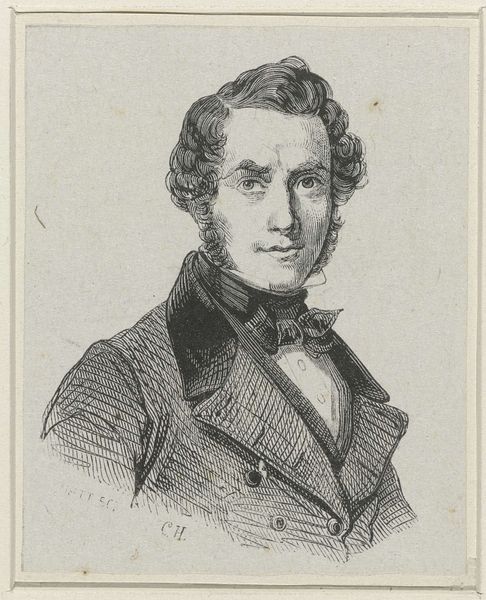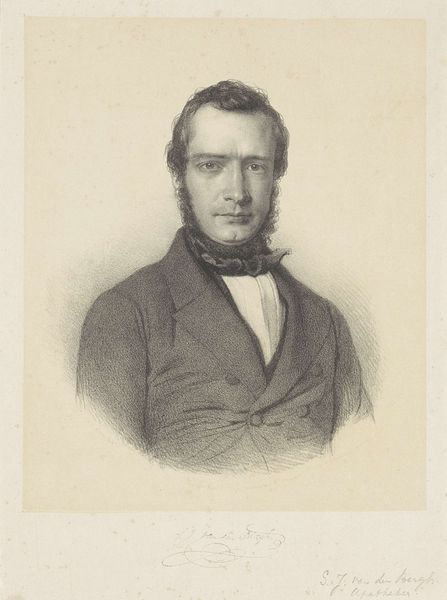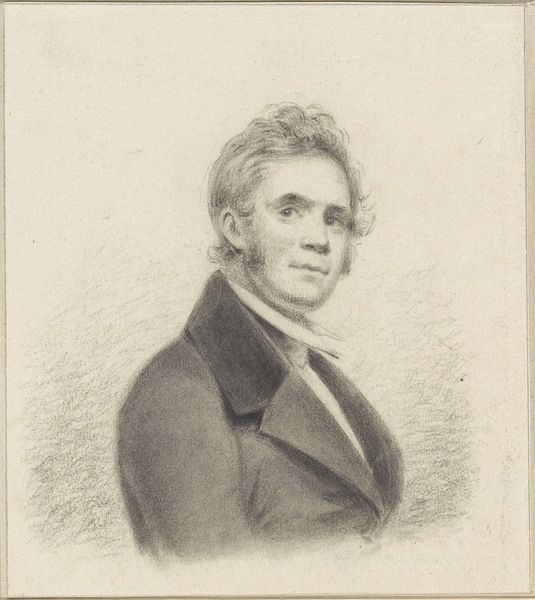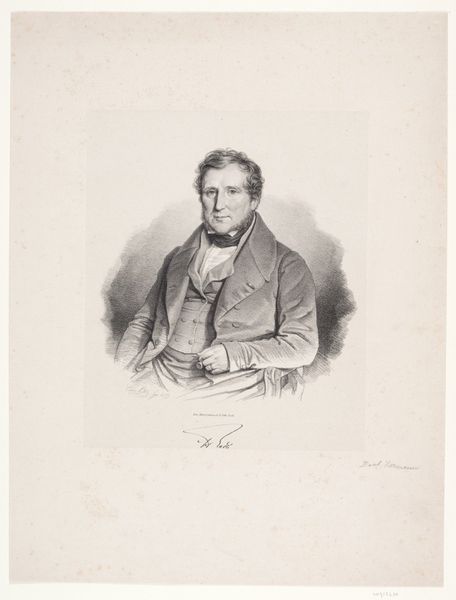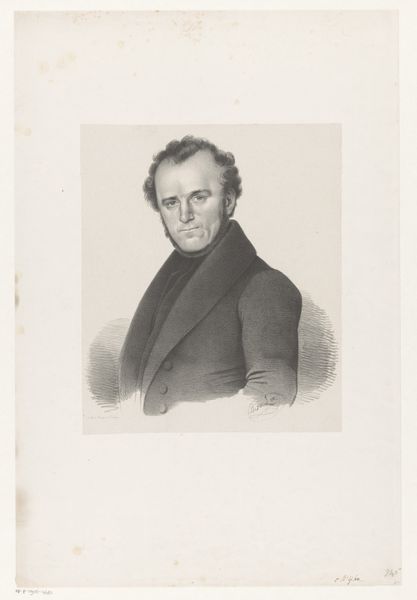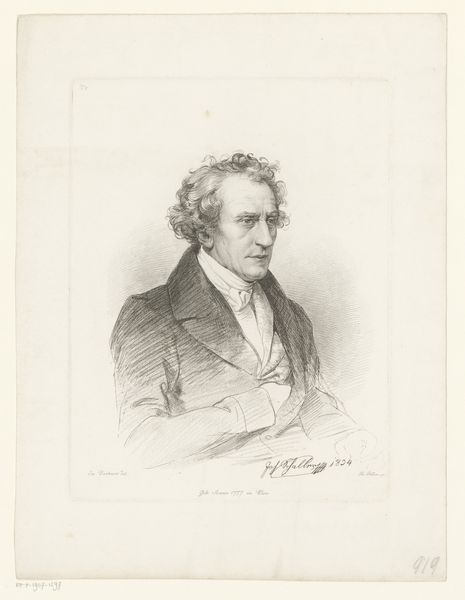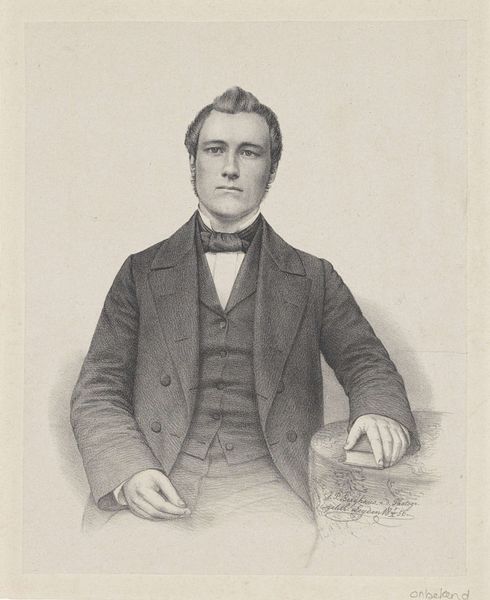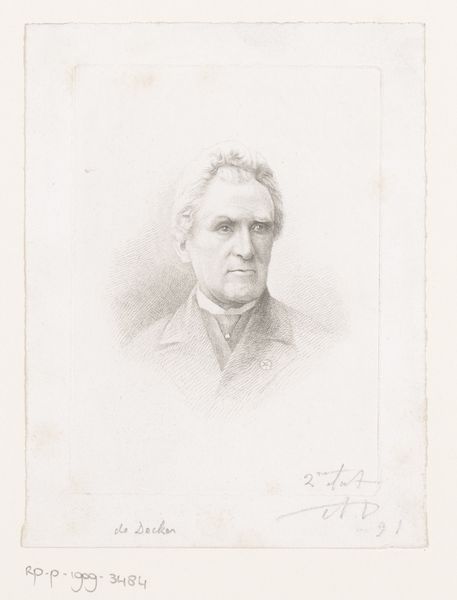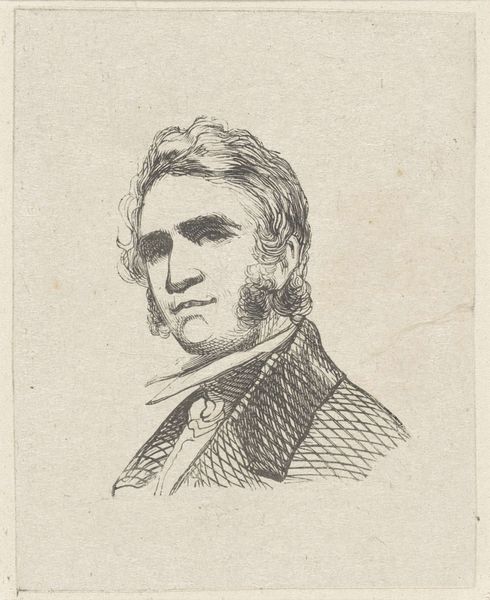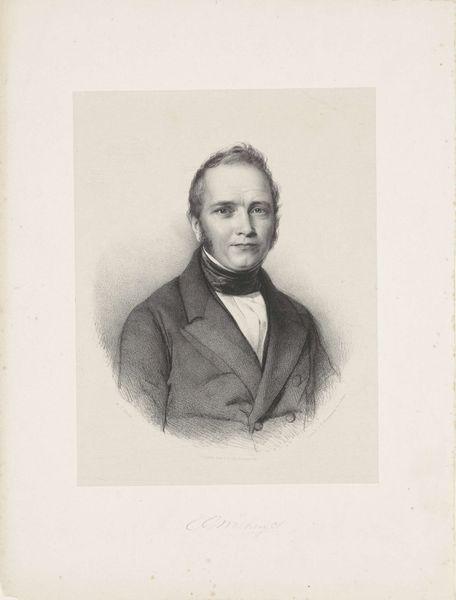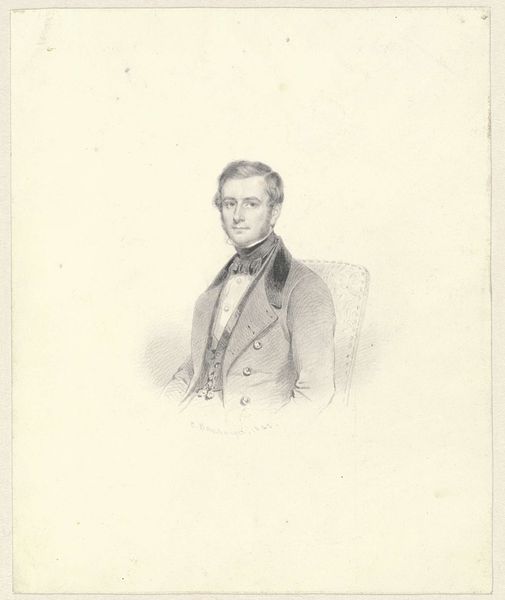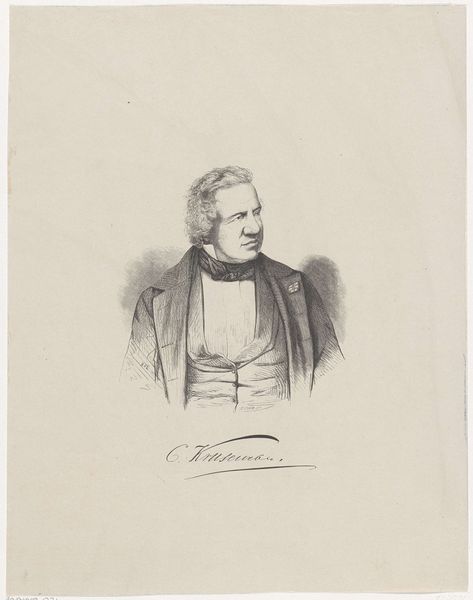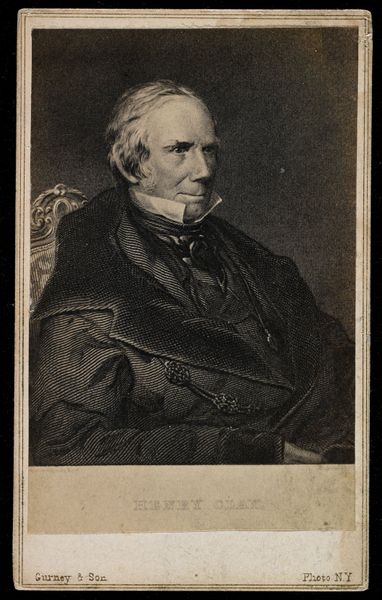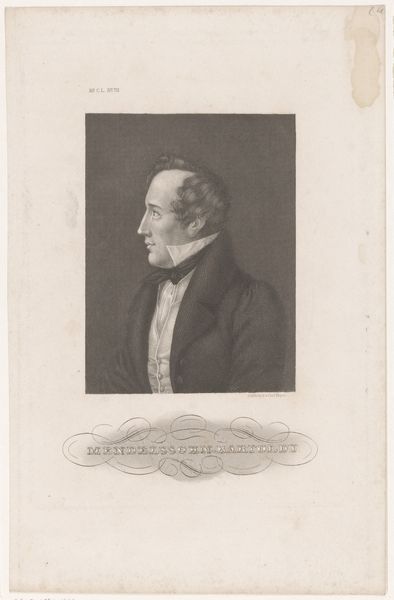
drawing, pencil
#
portrait
#
drawing
#
figuration
#
pencil drawing
#
romanticism
#
pencil
#
portrait drawing
Dimensions: height 160 mm, width 115 mm
Copyright: Rijks Museum: Open Domain
Editor: Here we have Antoon Van IJsendijck’s "Zelfportret," dating sometime between 1811 and 1875. It's a pencil drawing, quite delicate in its execution. I’m struck by the direct gaze of the subject; there's an intensity that comes across even in the subtle shading. What strikes you about this work? Curator: I notice immediately the societal conventions being upheld. This self-portrait, like many of its time, performs a specific role. Van IJsendijck is presenting himself as a respectable member of society through careful detail of his clothing and a controlled demeanor. How do you see this conforming to, or perhaps subverting, the typical expectations for portraiture in this period? Editor: That’s a great point. I hadn't thought about how carefully constructed that image is. He’s not revealing anything too vulnerable, is he? It’s more about projecting a certain status. Curator: Precisely! The “romanticism” label can be misleading. While there may be romantic flourishes in the hairstyle, this work is more firmly rooted in presenting a public persona, shaped by the institutional and social forces dictating how artists presented themselves. Consider who his audience was likely to be. How would that influence his self-representation? Editor: Presumably, potential patrons, fellow artists, or maybe even a future audience that could appreciate his work and understand his importance? So this is not simply self-expression but a strategic social act? Curator: Exactly! He’s constructing an image aligned with the expectations and power structures of his time. Think of it as an early form of self-promotion deeply entwined with the art market of the 19th century. Editor: That gives me a whole new way to see it. I was initially focused on the individual, but understanding the context really changes things. Curator: Indeed, looking at the politics of imagery reveals far more than just artistic skill. It unveils the silent dialogues between the artist, their society, and us, the contemporary viewers.
Comments
No comments
Be the first to comment and join the conversation on the ultimate creative platform.
